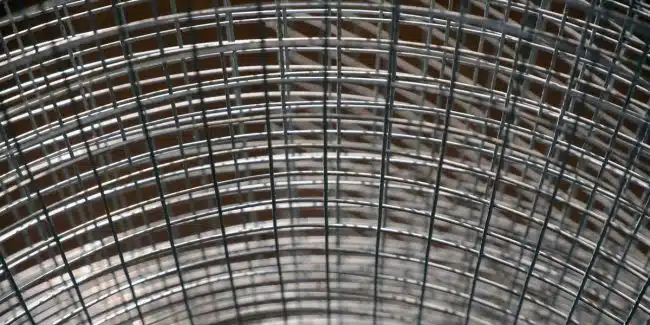-
+86 15030157877
-
sales@galvanizedmetalmesh.com
Dec . 26, 2024 16:56 Back to list
The Benefits and Applications of Plastic Barbed Wire in Modern Fencing Solutions
The Rise of Plastic Barbed Wire A Sustainable Solution for Modern Fencing
In recent years, the demand for sustainable materials has led to innovative alternatives in various sectors, including agriculture, construction, and security. One such development is the emergence of plastic barbed wire, which has begun to gain popularity as a cost-effective and environmentally friendly solution for fencing needs. In this article, we will explore the features, advantages, and potential challenges of plastic barbed wire.
What is Plastic Barbed Wire?
Plastic barbed wire is a fencing product made from high-density polyethylene (HDPE) or polypropylene, designed to replicate the functionality of traditional steel barbed wire. The plastic version consists of a central wire core, with barbed shapes affixed at intervals along its length, providing both physical deterrence and visual obstruction. This innovative product is lighter, more flexible, and easier to install than its metal counterparts.
Advantages of Plastic Barbed Wire
1. Durability and Weather Resistance Plastic barbed wire is engineered to withstand harsh weather conditions, including UV rays, rain, and extreme temperatures. Unlike steel, which can rust and corrode over time, plastic remains resilient, maintaining its structural integrity for years with minimal maintenance.
2. Lightweight and Easy to Handle The reduced weight of plastic barbed wire makes it easier to transport and install. This can significantly lower labor costs, especially in large-scale fencing projects, where traditional heavy materials may require additional equipment and manpower.
3. Cost-Effectiveness In many cases, plastic barbed wire is more affordable than traditional steel options. Not only does this offer a financial advantage upfront, but the longevity and lower maintenance requirements of plastic can lead to savings over its lifetime.
4. Environmental Benefits As the world becomes increasingly aware of the need for sustainable practices, plastic barbed wire can be produced from recycled materials, further reducing its carbon footprint. Additionally, the absence of metal means there are fewer environmental concerns related to mining and processing.
5. Safety Plastic barbed wire poses a lower risk of injury compared to sharp metal alternatives. This is particularly beneficial in areas where there might be human interaction, such as farms or residential zones, as it mitigates the risk of cuts and abrasions.
plastic barbed wire

6. Versatility Plastic barbed wire can be used in various applications, including agricultural fencing, boundary demarcation, and security installations for commercial properties. Its flexibility allows for creative design solutions tailored to specific needs.
Potential Challenges
Despite the many advantages, plastic barbed wire also faces some challenges that potential users should consider
1. Strength and Resistance While durable, plastic may not provide the same level of strength and deterrence as traditional steel barbed wire, particularly in terms of withstanding physical pressure from large animals or intentional tampering.
2. Perception and Acceptance The market for fencing is traditionally dominated by metal products, and there may be skepticism regarding the performance and reliability of plastic alternatives. Convincing consumers to switch may require education and demonstration of its effectiveness.
3. Environmental Considerations While plastic can be a sustainable option, it is still a synthetic material, raising concerns regarding microplastics and pollution. Ensuring that plastic barbed wire is produced from recycled materials and is fully recyclable at the end of its life is crucial to mitigating these issues.
4. Market Regulation As with any new product, regulatory bodies may need to establish standards for performance and safety in the use of plastic barbed wire, ensuring that it meets the expectations of consumers and complies with legal requirements.
Conclusion
The development of plastic barbed wire represents a significant leap towards sustainable fencing solutions in a world increasingly focused on environmental responsibility. While it offers a multitude of benefits, addressing potential concerns related to durability, acceptance, and environmental impact is essential for its widespread adoption. As innovation continues and technology advances, plastic barbed wire may very well become a staple in the fencing industry, proving that sustainability and functionality can go hand in hand.
-
Stainless Steel Wire Mesh Roll Wholesale & Manufacturers – Quality Exporters
NewsJul.26,2025
-
High Quality 3D Curved Welded Wire Mesh Fence for Security and Aesthetics
NewsJul.25,2025
-
High-Quality Security Window Screen Mesh for Home & Office Protection
NewsJul.24,2025
-
Hexagonal Gabion for River Bank Protection and Retaining Walls
NewsJul.23,2025
-
High Quality Stainless Steel Wire Mesh Roll & Supplier Wholesale Price
NewsJul.22,2025
-
Hexagonal Gabion Mesh: Durable Stone Cages for Landscaping
NewsJul.22,2025



